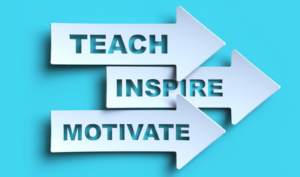
How to Launch a Startup on a Limited Budget
Many of today’s most famous and esteemed business leaders have stories about how they took a shot at their dream – each one of them

Many of today’s most famous and esteemed business leaders have stories about how they took a shot at their dream – each one of them

What’s the secret ingredient that will set the most successful companies apart, both today and in the future? It’s not a flashy new technology or

Recently, I coached a professional juggling multiple responsibilities: pursuing a PhD, working full-time, being a dedicated sports parent, and seeking their next career opportunity. They

In a world where technology is evolving at lightning speed, staying relevant is a challenge for both employees and employers. As industries adapt to new

The State of Women in Leadership: Room for Improvement We often hear about the business benefits of women in leadership roles. That isn’t just wishful

Although I have a full-time job, recently I’ve started to identify with solopreneurs. Why? Well, for eight years, I’ve also been spearheading an annual Children’s

Artificial intelligence (AI) is transforming organizations at a breathtaking pace. But even positive change can trigger push-back from detractors. When left unchecked, AI resistance can

Sponsored by The Culture Platform “Get some perspective.” That’s the best advice I ever received as a manager. And I took it to heart, because during

Diving into important talent strategy trends for 2024, one theme surfaces again and again. What many call “The Great Work Reset” isn’t over. Far from

In the fast-paced realm of modern work, where remote and hybrid setups reign supreme, the intricacies of collaboration have taken on a whole new meaning.

Pinpointing people with leadership potential is a crucial talent management responsibility. After all, your company’s long-term success depends upon the ability to identify future leaders

These are exciting times for anyone involved in employee learning. As generative AI becomes mainstream, the learning content authoring possibilities seem endless. However, cool content

Is concern over employee loyalty keeping you up at night? You’re not alone. Here’s one recent scenario: An executive team at a large healthcare system

Today’s workforce is rapidly changing, as Boomers pass the baton to their Gen X, Millennial, and Gen Z counterparts. However, for many organizations, this transition

In today’s fluid job market, companies everywhere are seeking innovative ways to tap into a more skilled, diverse, adaptable talent pipeline. This is a key

A career, by definition, is something that develops over an extended period of time. In other words, a successful career is not born — it

Are you an extrovert? About half of the people in the U.S. are. But what exactly does that mean? The Myers-Briggs Type Indicator (MBTI) personality

Corporate learning and development (L&D) is at a crossroads. Today’s workforce desperately needs a skills update to prepare for the future of work, and old-school

When it comes to careers, many of us no longer depend on a single source of income. In fact, people are turning to side hustles

Recently, I was talking with a dear friend who was about to interview a candidate she had unknowingly placed in a professional reputation “box”. The

People often hate the idea of networking, either because they’re introverts by nature, they’re afraid of rejection, or they don’t want to seem pushy, self-absorbed,

Anyone who says being a leader is easy is simply not being honest. Leadership is hard. Yes, I said it. And that shouldn’t shock anyone.

You’re a business leader. You believe in your company with all your heart. Your commitment to the organization’s mission drives you to aim high, work

In less than 20 years, podcasting has revolutionized the way we consume and engage with informational content, offering a powerful digital platform for individuals to

Sponsored by The Culture Platform What tools actually help managers manage their people? That’s the most important question every organization needs to ask itself as the